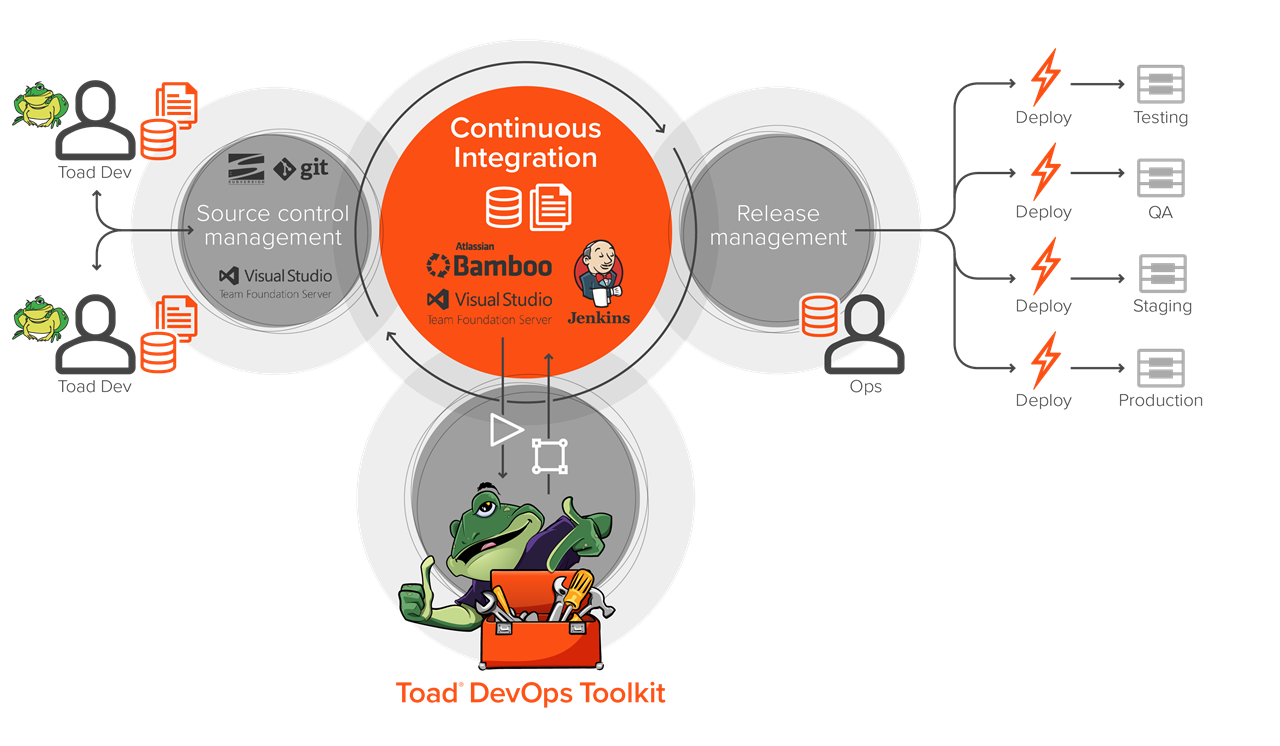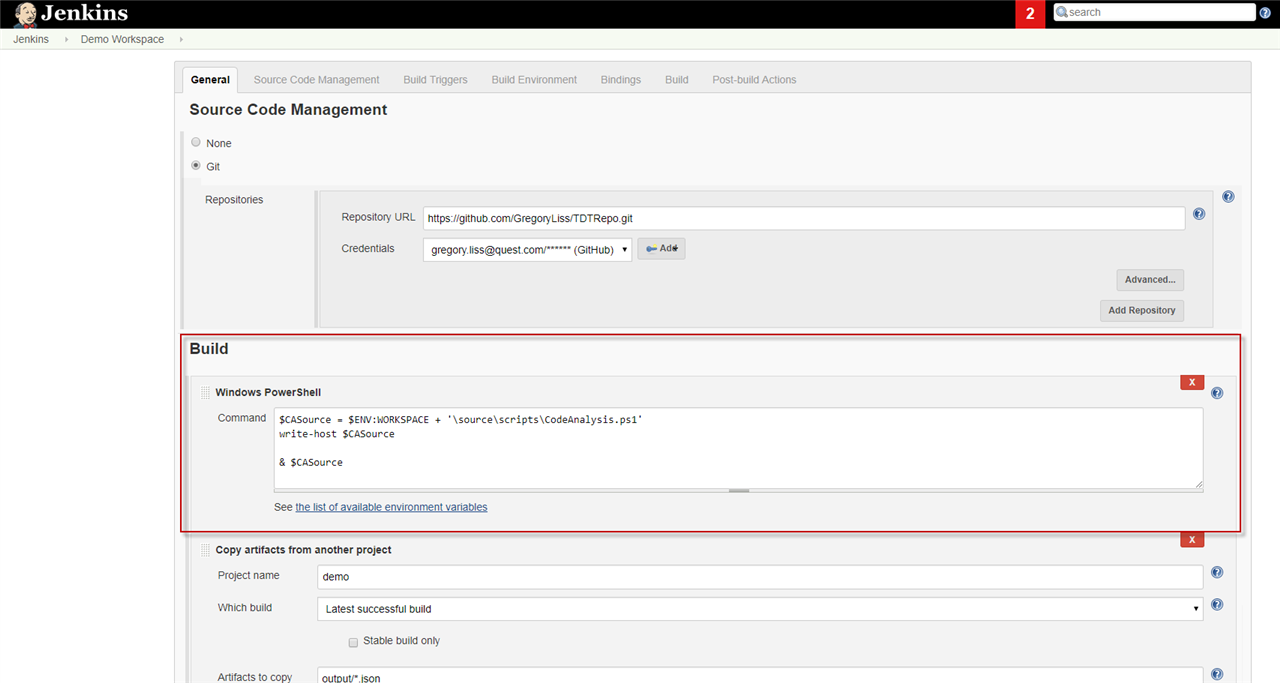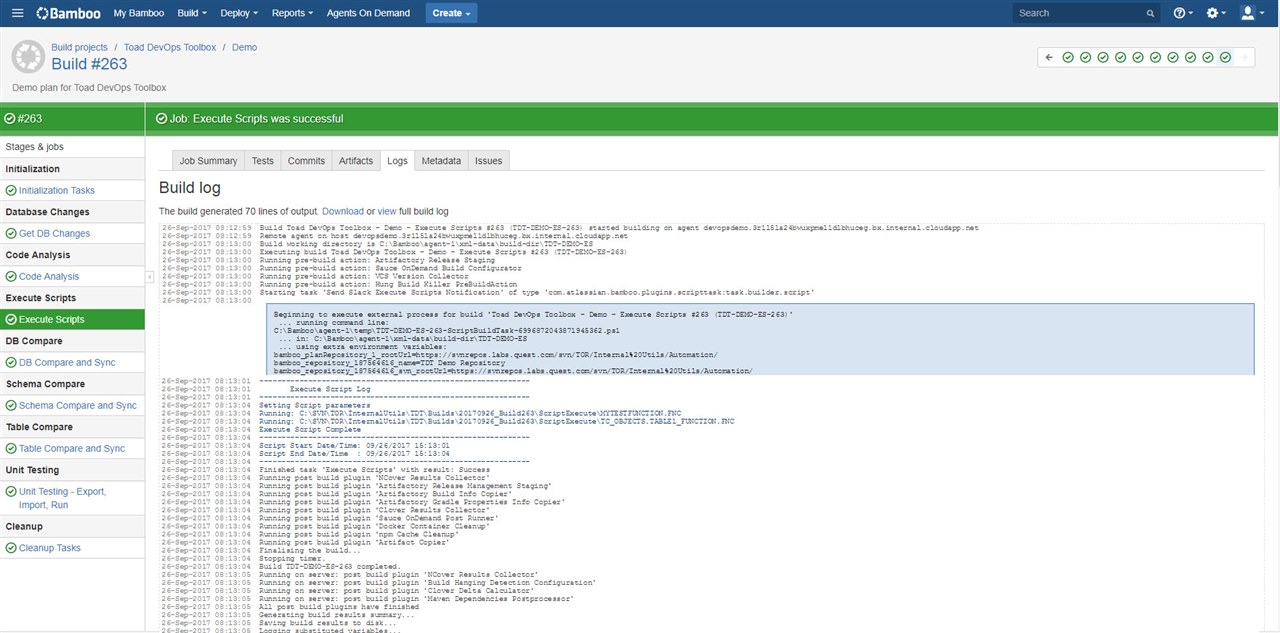Back in July this year, I wrote a blog describing the challenges many organisations are facing as they try to embrace DevOps as a way to help increase their business agility through higher operational efficiency by enabling their IT departments to shorten their application release cycles, increase quality through fewer defects with lower the risk of application outages.
Last year, Quest surveyed many of our Toad users in order to gather intelligence about what companies are trying to accomplish when it comes to DevOps, what some of their challenges are and specifically, how they plan to bring their database operations into their implementation plans – typically the major bottleneck. The survey focussed on People, Processes and Technologies since all have their part to play in successfully implementing DevOps initiatives.
We have also been working with many customers over the last 2 years to better understand the unique challenges around bringing Oracle database operations into their DevOps infrastructure and I am pleased to announce that we will soon be releasing a new product from the Toad stable – called Toad DevOps Toolkit.

Toad DevOps Toolkit and its place in the DevOps infrastructure
Toad DevOps Toolkit reduces the database bottleneck by making it easy to execute key database development functions within your DevOps workflow — without compromising quality, performance or reliability.
This unique Windows application exposes key Toad for Oracle functionality as programmable objects. For example, you can test PL/SQL code to ensure functional correctness; review it to make sure it meets standards for quality and maintainability; perform database, schema and data compare and sync to ensure integrity and mitigate risks; and implement scripts to physically deploy database changes throughout the release pipeline.
Toad DevOps Toolkit can be installed on a Windows laptop, desktop, server or VM either on-premise or cloud (provided it can connect to the build automation server) to maximise flexibility.
DevOps automation tools such as Jenkins and Bamboo can include database-related steps as part of their continuous integration processes via scripts, such as PowerShell and VB, speeding project completion while ensuring code quality.

Calling a Code Analysis function from Toad DevOps Toolkit using Jenkins via a PowerShell script
As function calls are made into Toad DevOps Toolkit to perform static code reviews, unit tests, etc on the database objects in the build, output such as reports, JSON content, logs, etc which can be specified in the build console, are viewable in the build console.
The build console remains the dashboard by which DevOps operations are orchestrated.

A static code review HTML report, generated by a Toad DevOps Toolkit Code Analysis call, being viewed in a Bamboo build console
In this first release of Toad DevOps Toolkit, we are focusing on the primary elements necessary to bring Oracle development functions into the build and deploy process.
- PL/SQL unit testing — ensure the functional correctness for all PL/SQL code in your build by running unit tests and reviewing pass/fail status.
- Static code reviews — improve the quality and maintainability of your PL/SQL code by performing static code reviews based on a defined Toad Code Analysis rule set, and assess quality levels based on pre-defined thresholds.
- Database, schema and data compare — compare Oracle database configurations, schema objects and table data between source and target databases (such as dev and test) and generate sync scripts.
- Script execution — promote your build artifacts into your target environment and review success or failure status.
What if I’m an Oracle database developer and I’m not doing any functional testing or code reviews?
That’s a common question I’ve gotten from customers over the last 2 years. The straight answer is – you really need to if you want to bring database development into an automated build process.
The good news, however, is it isn’t as hard as you might think. Using Toad for Oracle; the Edition I recommend is the Toad for Oracle Developer Edition (used to be called Toad Development Suite for Oracle) includes everything you and your developers need to build high quality, robust code which performs and scales in production.
Toad for Oracle Developer Edition is the perfect complement to Toad DevOps Toolkit and will enable your development teams to quickly create and maintain their PL/SQL unit tests, perform consistent code reviews, optimize their SQL and PL/SQL code without relying on a DBA and performance test the production scalability of key programs before they reach production.
So to summarize, Toad DevOps Toolkit:
- Integrates database development, testing and deployment tasks into the DevOps workflow
- Provides static and dynamic code quality statistics in continuous integration and continuous delivery environments
- Facilitates code quality
- Ensures project deadlines can be met across application and database deployment
- Boosts productivity with minimal disruption to current DevOps processes
Integrates into virtually any continuous integration and continuous delivery tool, including Jenkins, TFS and Bamboo
Start the discussion at forums.toadworld.com